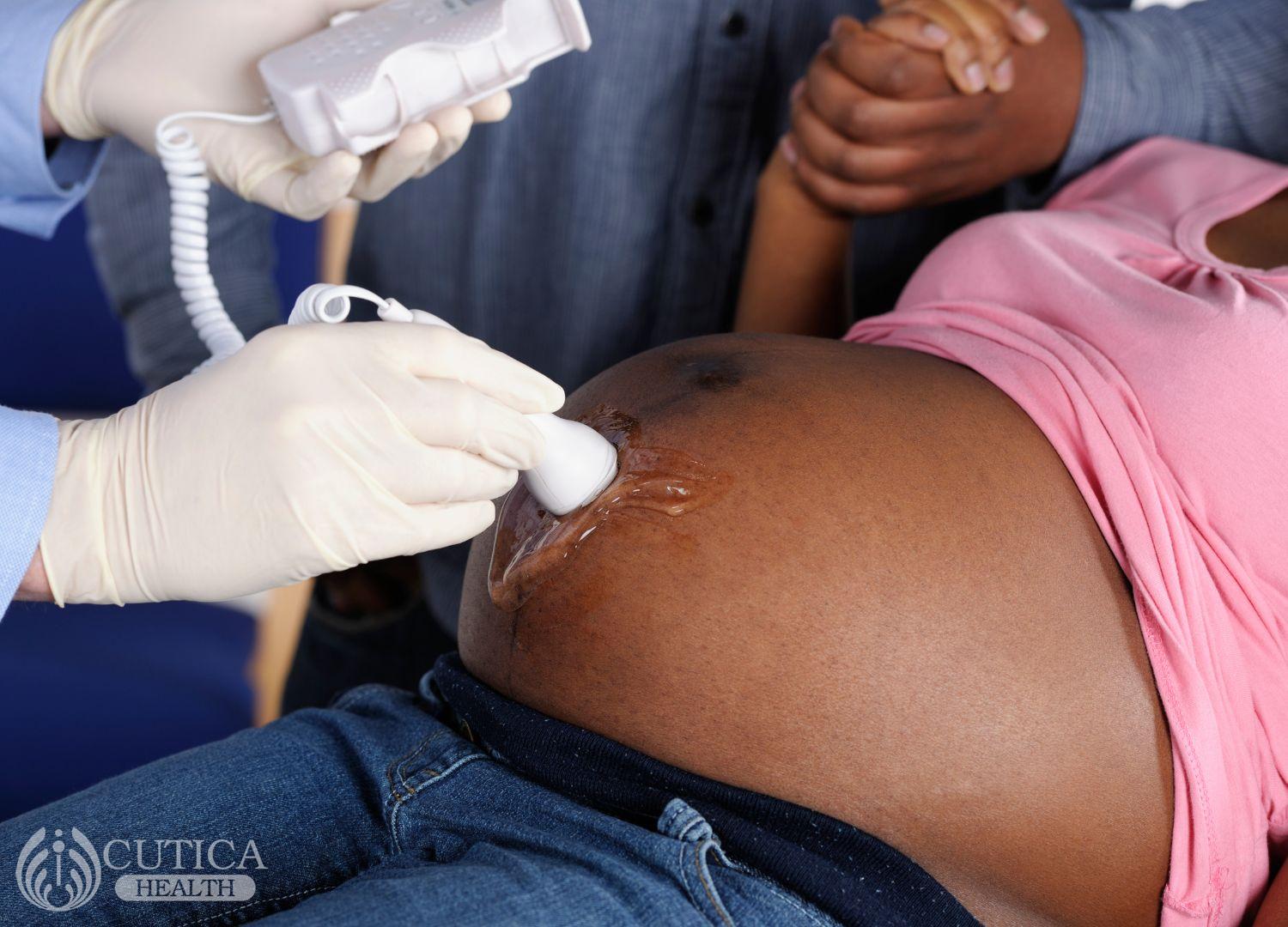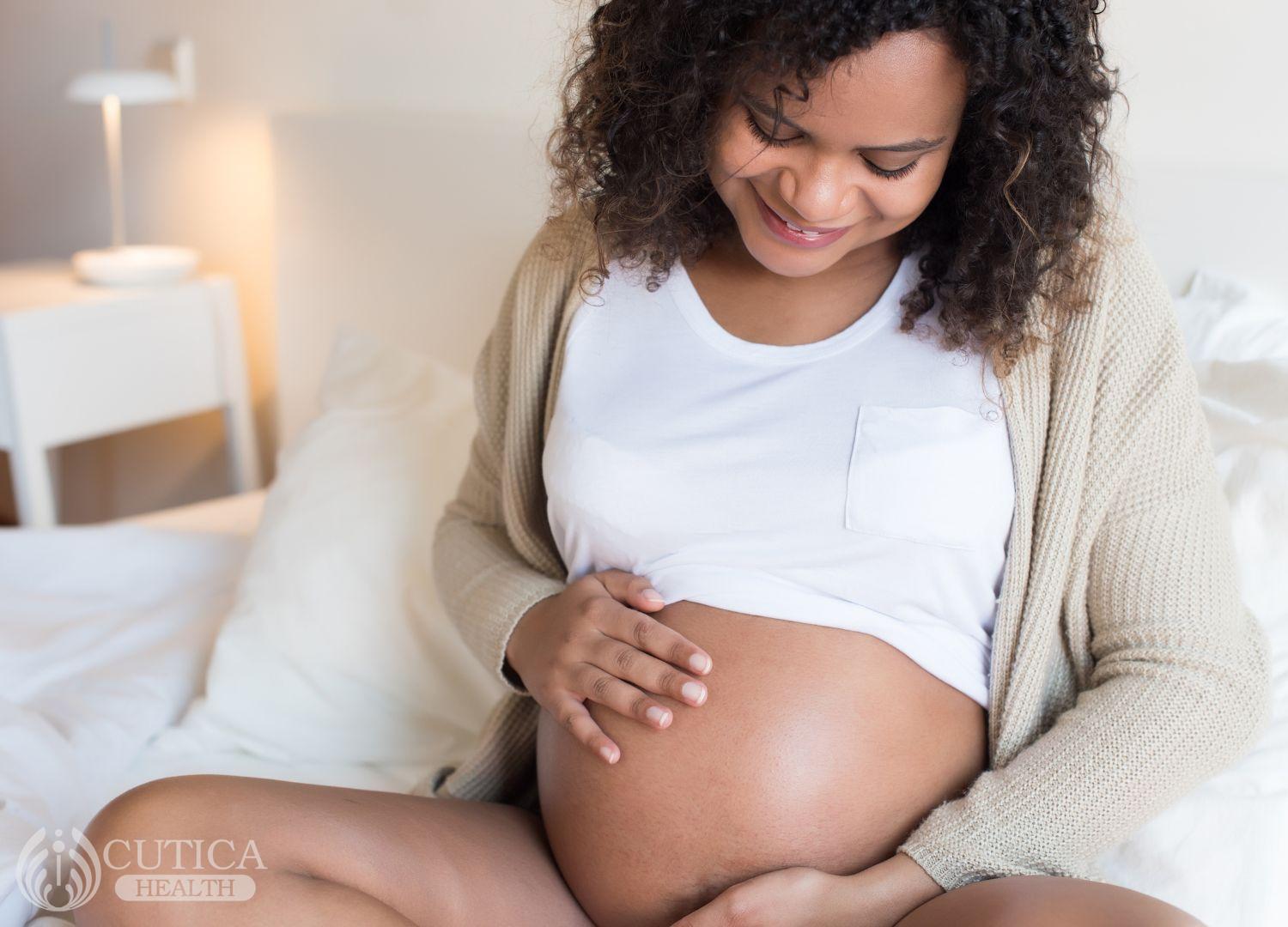Spotting is light bleeding that can occur during pregnancy. In the first 12 weeks of pregnancy, bleeding is common and may not be an indicator of a problem with your health or the baby’s. It can present as a light pink or brown spotting to bright red bleeding with or without low back pain and abdominal cramps.
Causes of non-threatening bleeding
- Implantation Bleed
It occurs around the time the developing embryo attaches itself to the wall of the womb. This type of bleeding is light, lasting from a few hours to a few days. It can be seen around the first six to twelve weeks after conception, and because it occurs around the same as menstruation is due, women may mistake it for menstruation. The bleeding normally resolves spontaneously, with the pregnancy continuing without complications.

- Sex
Due to the changes in your cervix during pregnancy, sex, especially in the first few months, can cause bleeding. This is usually short-lived, appearing as pink or brown spotting.
- Vaginal examinations
This is due to trauma to the cervix. It resolves spontaneously and should not have any other symptoms other than soreness from the exam.
- Onset of labour
This is usually associated with cramping that gets progressively worse. Bleeding should be mild, as severe bleeding may indicate a complication.
Causes of harmful bleeding
- Miscarriage
Unlike the spotting seen in implantation bleeding, this is much heavier. There is also severe cramping, and there may be passage of the products of conception. The absence of a foetal heart on ultrasound with loss of early pregnancy symptoms is an indicator of foetal demise. It is advisable to get a second opinion from an obstetrician if you are dissatisfied with the report. Note that bleeding in early pregnancy does not always mean a miscarriage.
- Ectopic pregnancy
In ectopic pregnancy, the pregnancy fails to continue because implantation of the embryo occurs elsewhere, for example, in a fallopian tube instead of inside the uterus. This pregnancy cannot be sustained. Common associated signs are lower abdominal pain and a history of prolonged absence of menstruation.
- Infection
Sexually transmitted infections like chlamydia, gonorrhoea, or even herpes can cause spotting, especially during sex. Some common symptoms are foul smelling vaginal discharge, painful intercourse, and pain in your lower belly.
- Molar Pregnancy
This rare condition occurs when abnormal tissue grows inside a uterus instead of a baby.
Other more serious causes of bleeding in this stage are labour that occurs too early, problems with the placenta or even a condition known as uterine rupture. These conditions require immediate expert management, as they can be fatal to both mother and child.
What to do if you are spotting
It is important to keep track of the blood and take note of things like the amount (how many pads), the colour, any passage of clots, and any other associated symptoms.
It is recommended that you rest and avoid having sex and inserting items like tampons. Notify your doctor for advice.

Summary
Spotting blood in pregnancy, especially in the first trimester, is quite common, and it is often not a cause for alarm. If spotting occurs, it is advisable to visit your doctor, who will run some tests and properly assess you and your baby. Do not take advice from unqualified people, as this may be detrimental to both your health and your baby’s.

